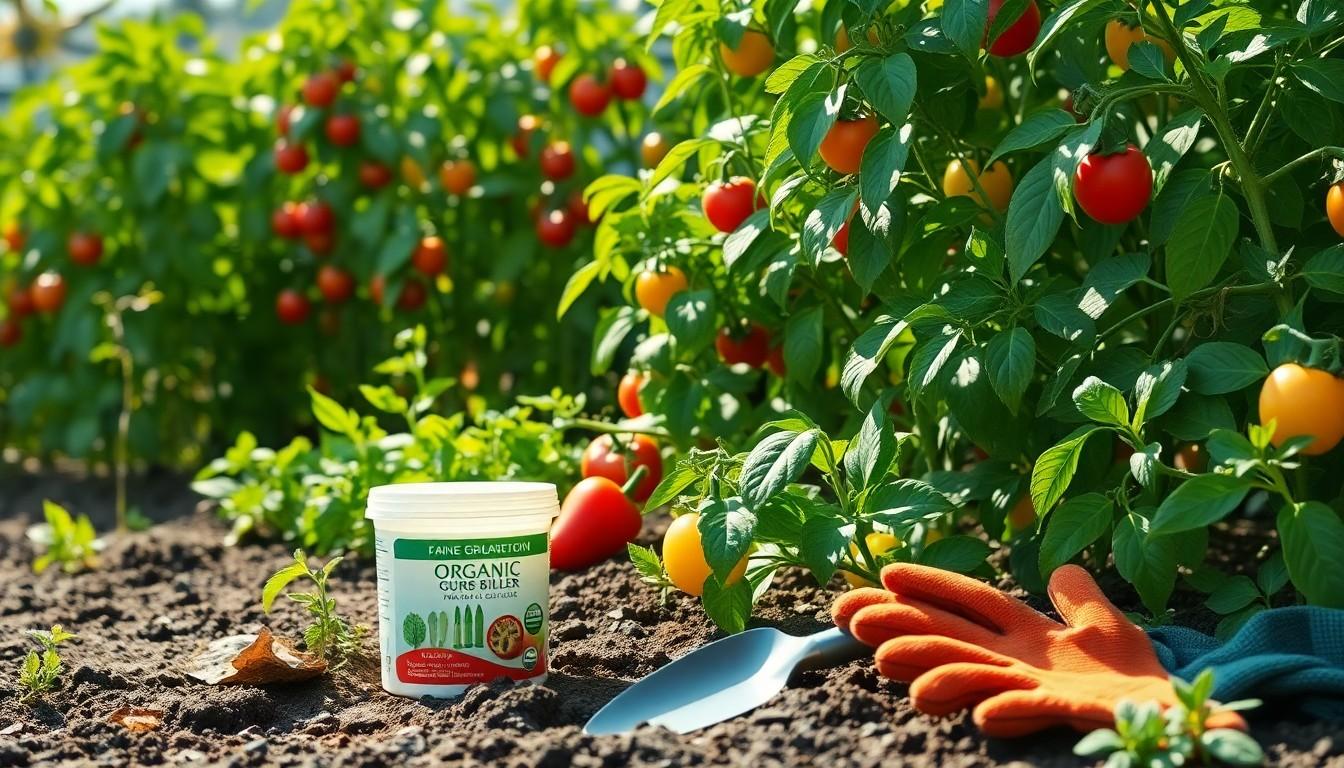When it comes to growing a thriving vegetable garden, nothing can ruin the fun faster than pesky grubs munching away at your precious plants. Imagine putting in all that hard work only to find your garden has turned into an all-you-can-eat buffet for these underground pests. It’s enough to make any gardener want to throw in the trowel!
Understanding Grubs in Vegetable Gardens
Grubs pose significant challenges for vegetable gardeners. Recognizing their types and impact on plants aids in effective management.
Types of Grubs
Common types of grubs include Japanese beetle grubs, European chafer grubs, and June beetle grubs. Japanese beetle grubs are creamy white with a distinctive “C” shape. European chafer grubs are also white and have a more elongated body. June beetle grubs, featuring a darker color, typically measure up to two inches long. Each type emerges from eggs laid in soil and feeds on roots of plants during their larval stage, emphasizing the need for accurate identification to implement suitable control measures.
Impact on Plants
Grubs damage plants by consuming their roots, which leads to poor nutrient absorption. Symptoms of infestation may include wilting, yellowing leaves, and stunted growth. Additionally, heavy infestations might cause plants to die. Young seedlings are especially vulnerable due to their shallow root systems. In some cases, grubs attract animals like birds and raccoons that dig in search of food, further disrupting the garden. Understanding these effects plays a vital role in mitigating damages caused by grubs in vegetable gardens.
Choosing the Right Grub Killer

Selecting the appropriate grub killer enhances the health of a vegetable garden. Gardeners must weigh their options carefully.
Chemical vs. Organic Options
Chemical grub killers, such as imidacloprid and chlorantraniliprole, offer fast results. They target grubs effectively but may harm beneficial insects and soil health. Organic grub killers, like nematodes or diatomaceous earth, provide a safer alternative. These methods minimize impact on the ecosystem, promoting long-term sustainability. Each option requires understanding its mechanisms and implications.
Factors to Consider
Weather conditions play a crucial role in selecting a grub killer. Optimal application occurs during warm, moist periods when grubs are most active. The life cycle stage of the grubs matters, too; treatments are more effective on younger larvae. Additionally, consider soil health and the presence of beneficial organisms while choosing a product. Environmental impact, cost, and intended use in the vegetable garden significantly influence the selection process.
Top Grub Killers for Vegetable Gardens
Choosing the right grub killer enhances vegetable garden health. Numerous options exist, each varying in effectiveness and environmental impact.
Product Reviews
Imidacloprid ranks high for quick results and is especially effective against various grub types. Many gardeners recommend it for severe infestations. Chlorantraniliprole offers another chemical solution, targeting the larval stage of grubs effectively while minimizing harm to beneficial insects. Nematodes provide a natural, eco-friendly option, targeting harmful grubs while promoting soil health. Gardeners appreciate the safety aspect for pets and children. Diatomaceous earth works as a physical barrier against pests; its effectiveness increases when applied during dry conditions. Each product has specific applications that maximize their potential.
Effectiveness and Application Methods
Effectiveness depends on various factors, including timing and application method. Early spring applications succeed with most chemical products, as grubs are near the surface. Granular treatments are easy to spread but should be activated with water. Liquid applications penetrate soil efficiently, offering more immediate control. Nematodes thrive in moist conditions and require specific soil temperatures to effectively eliminate grubs. Observing weather patterns ensures optimal results, as factors like heavy rain can wash away treatments. Understanding the life cycle of grubs assists in selecting the right timing for application.
Tips for Preventing Grub Infestations
Taking proactive steps helps minimize grub infestations in vegetable gardens. Implementing specific strategies can significantly reduce the chances of grubs disrupting plants.
Cultural Practices
Adopting cultural practices enhances garden health. Rotate crops each year to disrupt grub life cycles effectively. Maintain healthy soil through proper fertilization and organic matter incorporation, promoting strong plant roots. Water plants wisely, focusing on deep watering to encourage root growth, which makes them less susceptible to grub damage. Additionally, planting resistant varieties of vegetables can provide an extra layer of protection. Mowing grass higher in surrounding areas creates an environment less attractive to grubs. These strategies collectively contribute to a robust vegetable garden.
Beneficial Insects
Encouraging beneficial insects supports natural pest control in gardens. Predatory beetles, like rove beetles and ground beetles, actively hunt and consume grubs. Establishing habitats for these beneficial insects can boost their population. Creating diverse planting schemes brings beneficial insects into the garden ecosystem. Incorporating companion plants, such as marigolds, attracts predatory insects while deterring harmful pests. Providing a water source, such as a shallow dish, further engages beneficial species. Not only do these insects protect vegetables, but they also help maintain ecological balance within the garden.
Conclusion
Managing grubs in a vegetable garden is essential for maintaining healthy plants and ensuring a bountiful harvest. By understanding the types of grubs and their impact on plants gardeners can make informed decisions on the best grub killers to use. Whether opting for chemical solutions or organic alternatives each choice comes with its own benefits and considerations.
Implementing preventive measures alongside effective treatments can create a resilient garden ecosystem. By fostering an environment that encourages beneficial insects and practicing good cultural habits gardeners can significantly reduce the likelihood of grub infestations. With the right strategies in place it’s possible to protect the garden from these pesky pests and enjoy thriving vegetables all season long.

